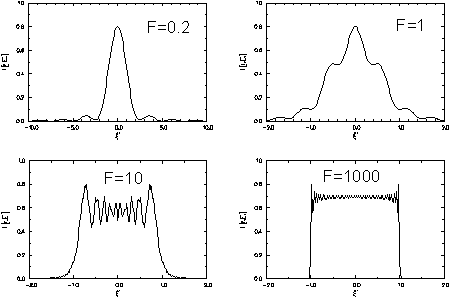The propagation process changes the transversal structure of a pencil of light. This phenomenon is known as diffraction and is due to the wave-like properties of light. The most important
parameter needed for classifying the diffraction is the Fresnel number F. This dimensionless number is defined as the radius of the radiation field at the output plane squared and divided by
the product of the wavelength of the light and the distance between the output plane and the plane in which the light distribution is to be defined. A high Fresnel number means that the light propagates almost linearly: the original distribution remains, to a large extent, constant (see F = 1000 below). This is the range of geometrical optics in which the propagation of light can be described using the concept of light rays. Diffraction is more prominent for smaller Fresnel numbers. The Fresnel number for optical resonators usually ranges between 1 and 10, for high power solid state lasers up to 100, the structure of laser radiation fields is therefore strongly affected by diffraction.
 Fraunhofer Institute for Laser Technology ILT
Fraunhofer Institute for Laser Technology ILT